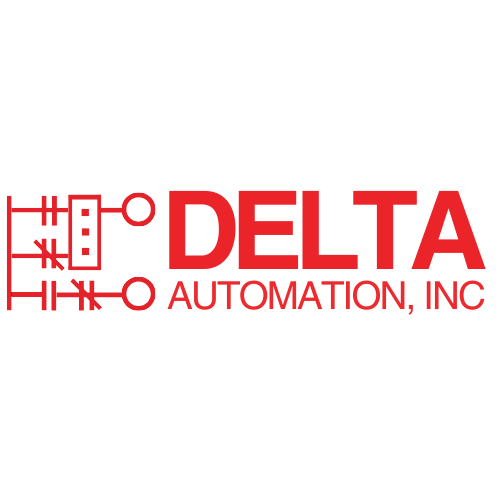The Science of Failure: Why Most Drives Die Before Their Time
Introduction: When Good Drives Go Bad
Drives aren’t designed to fail early — yet in real-world environments, many don’t make it past half their expected life. The culprit isn’t always poor manufacturing; it’s usually harsh conditions, power fluctuations, or neglected maintenance. Each failure tells a story of stress, heat, or contamination that could have been prevented.
At Delta Automation, we’ve repaired thousands of drives across brands and industries. Our technicians don’t just fix the symptoms — they uncover the root causes behind early failures, helping facilities restore uptime and prevent repeat breakdowns.
1. Overheating: The #1 Drive Killer
Heat is responsible for more premature drive deaths than any other factor. Every 10°C increase above a drive’s rated temperature can cut the lifespan of its internal components (like capacitors and IGBTs) by 50%.
Typical overheating causes:
- Clogged or blocked air vents
- Failed or slow cooling fans
- Cabinets without proper ventilation
- High ambient temperatures near other heat sources
Prevention Tip: Schedule regular drive inspections and fan replacements. Delta’s repair services include full thermal cleaning, new thermal paste application, and temperature-controlled testing under real load to ensure proper heat dissipation.
2. Dust and Contamination: The Hidden Enemy
Dust and debris are silent destroyers of sensitive drive electronics. Over time, contaminants build up inside the housing, trapping heat and creating conductive paths that cause shorts or signal interference.
How contamination kills drives:
- Dust acts as insulation, reducing cooling efficiency
- Metal particles or oil mist cause shorts and corrosion
- Humidity introduces oxidation and board degradation
Prevention Tip: Keep drives sealed in appropriate NEMA-rated enclosures and schedule ultrasonic cleaning during repairs. Delta’s component cleaning process removes residues, restores circuit integrity, and protects against future contamination.
3. Power Surges and Voltage Fluctuations
Electrical instability is another major contributor to premature drive failure. Voltage spikes from lightning strikes, unstable grids, or motor switching can silently damage internal circuitry — often long before a complete failure occurs.
Symptoms of surge damage:
- Blown input fuses or rectifiers
- Random undervoltage or overvoltage alarms
- Intermittent IGBT or DC bus faults
Prevention Tip: Use surge suppressors, reactors, or isolation transformers to protect sensitive equipment. Delta’s repair lab tests each unit under simulated surge and load conditions to confirm stability before return shipping.
Looking for durable, surge-resistant models? Explore the LS Electric Drives collection or the ABB ACS143 Drive — both designed to handle voltage irregularities more effectively than older-generation units.
4. Poor Installation and Grounding
Even the best drives can fail early if installed incorrectly. Improper grounding or cable shielding introduces electrical noise, stray currents, and thermal stress — gradually degrading components and sensors.
Common installation mistakes:
- Shared or loose ground connections
- Excessive cable lengths without suppression
- Improper conduit isolation causing feedback loops
Prevention Tip: Always follow manufacturer grounding diagrams and shielded cable recommendations. Delta’s field engineers can assist with onsite evaluations to ensure your installation meets electrical standards and avoids premature wear.
5. Aging Components and Lack of Preventive Care
Drives age naturally — but neglect accelerates it. Capacitors dry out, fans lose performance, and relays wear down. By the time faults appear, component degradation is often advanced.
Best practices for long-term reliability:
- Replace fans and relays every 3–5 years
- Reform capacitors during long storage periods
- Monitor drive temperature and fault logs regularly
Delta’s preventive maintenance programs catch early signs of component aging before failure occurs. Each refurbished drive is returned with life-limited parts replaced and backed by a 1-year warranty.
6. The Delta Difference: Data-Driven Reliability
Delta’s approach is rooted in data and engineering precision. Every repaired drive undergoes diagnostics, power-up simulation, and real-load testing. We identify root causes — not just symptoms — and provide actionable recommendations to prevent recurrence.
Whether it’s a servo amplifier, DC drive, or control module like the Allen-Bradley 1788-DNBO, our technicians combine deep technical expertise with industry-leading diagnostic tools to maximize reliability and reduce future downtime.
Conclusion: Extend the Life of Every Drive
Drives fail for scientific reasons — and those reasons are predictable. Heat, dust, and voltage stress quietly erode performance until failure becomes inevitable. But with proactive maintenance, controlled environments, and professional repair, that fate can be avoided.
Don’t let preventable failures disrupt production. Visit our Products page to explore reliable drive options or schedule a service consultation through our Contact page. Keep your systems running stronger, longer, and smarter with Delta Automation.
